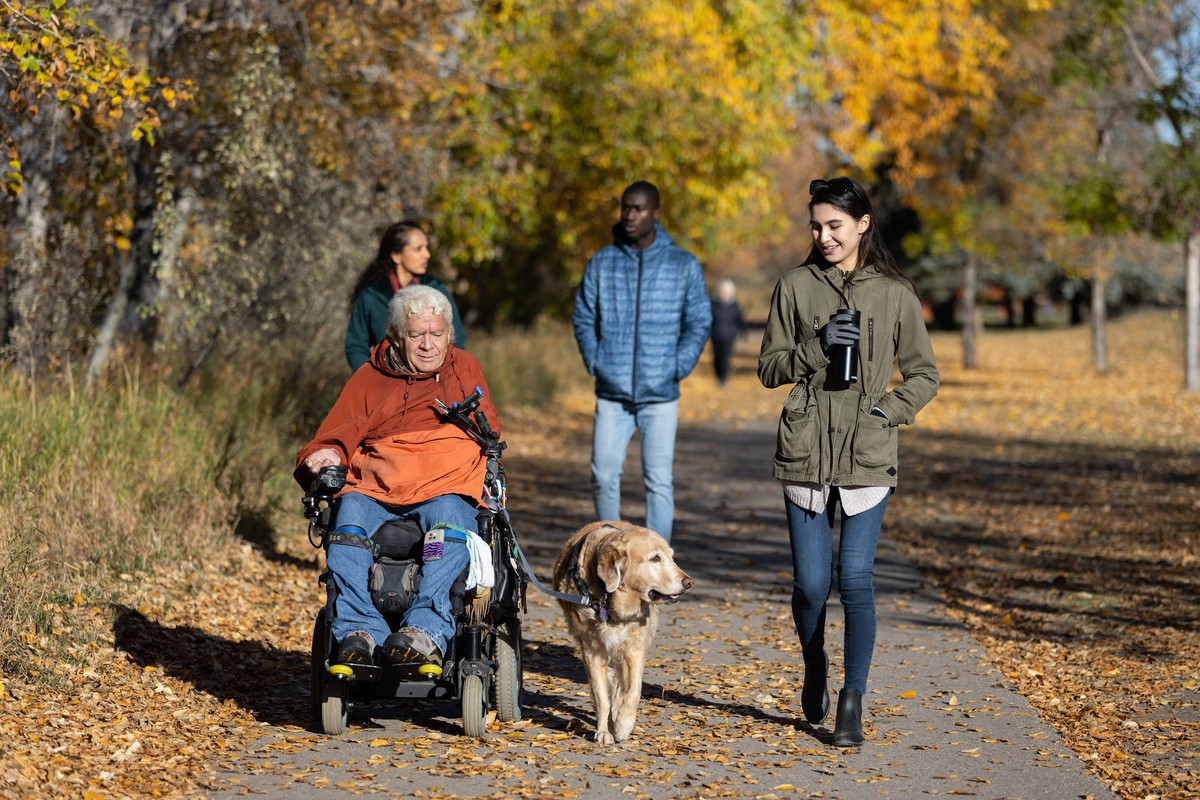Digital Equity
Program spotlight
AHA! Affordable Hardware Access
The AHA program helps Calgarians who need a computer by giving them older City computers that are still in good shape. When we tested the program in 2023, people were referred to us by community supports and were part of the Fair Entry program.
We teamed up with Technology Helps Foundation to teach people how to use their new computers and to offer tech support when needed. Watch this video to learn more about the AHA! program and how The City is helping more Calgarians get connected online.
Media Release
July 29, 2025: Affordable Hardware Access Program Expands in Calgary
Collaboration between The City of Calgary, United Way of Calgary and Area (United Way) and Technology Helps Foundation improves digital equity for Calgarians.
Read the media release.
On this page
-
Learn about the digital divide, digital equity and what it means for you.
-
Connection is what makes neighbourhoods strong.
-
People to talk to, tools you can use and more to help you be connected online.
-
From research to community engagement, find out how we’re making a difference together.
What is digital equity?
Technology should work for everybody. Imagine a city where everyone can:
When everyone can access the digital services, tools and supports they need, no matter what device they are using, where they are, where they live or how much money they make that's digital equity.
But right now, everyone can’t. Why not?
|
Costs: Not everyone has smart phones, computers or home internet because they can’t afford it. |
|
|
Digital skills: Not everyone knows how to use technology or where to get help with it. |
|
|
Accessibility: Technology such as websites may not be designed so everyone can use them easily, regardless of their abilities. |
Let’s build a Calgary where no one is left behind
The City of Calgary is finding ways to reach digital equity, where all people can connect online the way they want and for what they need, no matter where they are, where they live, or how much money they make. By working together with other groups in the community and with you, we’re building a stronger city that includes everybody.
Why is digital equity important?
Being connected makes our neighbourhoods stronger. But today, many services and resources are online, and not everyone can access them easily. We want to make life better by helping everyone get the tools, skills, and internet they need to go online the way they want. The Digital Equity Strategy is The City’s plan to support people in getting connected and staying connected.

Where to find help
Here are some programs and pilot projects that can help people get better access to the internet and feel more confident using technology.
What The City has done so far
Talking to our community
Talking to our community
We talked to services and community groups in Calgary to learn:
- What support is missing.
- What’s working well.
- What could be improved.
This helped us learn what “digital divide” means for Calgary and work with more people to think about what we can do to help the community. These thoughts became a list of actions that were rated by importance to the community. Read what was said in the What we heard: Digital equity participants report.
We talked to groups of people that are more likely to have a hard time connecting online. We also talked to people we saw at libraries, in the park, and waiting for the train. We asked people what made it hard for them to connect online, what they liked to do online, and what they wanted to do but couldn’t. This helped us learn what people are having trouble with and where we can help. Read what we learned in the What we heard: Calgarians experiences with the digital divide report.
- Word for word responses: Calgarians experiences with the digital divide.
Bringing teams together
Bringing teams together
We teamed up with people who work in libraries, schools, and support groups to choose actions that make it easier for everyone to connect, live, work, and grow in Calgary.
- Learn more: Digital Equity Advisory Panel terms of reference
If you want share how you feel connecting online or learn more about what we are doing, you can talk to Erin Ruttan.
Improving City services
Improving City services
In 2023, three City groups worked with IncluCity to test how easy it is to use some of our online services. This helped us understand where people face challenges and how we can improve. This project was funded through the Equity in Service Delivery Fund.
Doing research with partners
Doing research with partners
University of Calgary: In 2022, we worked with The University of Calgary to see what other cities around the world were saying about the digital divide. We looked at:
- What other cities found made it hard to connect online
- What has been done to help people connect
- What groups are having a harder time
- What actions Calgary should take first to make connecting easier
- How Calgary is doing compared to other cities
Read the paper: Addressing digital equity and the digital divide.
An academic version will be published in The Journal of Medical Internet Research.
Open North Case Study: In early 2022, we shared our digital equity work as part of the Open North Case Study on Digital Equity actions in Canada.
Civic Tech Saint Johns: In late 2022 we talked to Civic Tech Saint Johns about how we work with our community to understand issues. We also talked about our steps for building a digital equity strategy.


